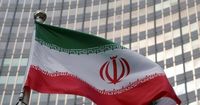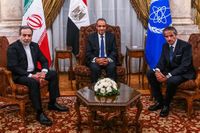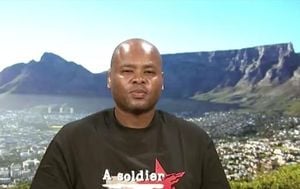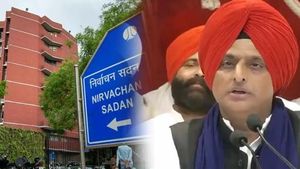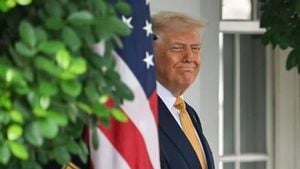On September 9, 2025, a significant diplomatic breakthrough emerged in Cairo, where Iran and the United Nations' nuclear watchdog, the International Atomic Energy Agency (IAEA), signed a new agreement to resume cooperation and relaunch inspections of Iran’s nuclear facilities. The deal, reached after months of heightened tensions and international concern, was finalized during a meeting between Iranian Foreign Minister Abbas Araghchi, IAEA Director General Rafael Grossi, and Egypt's Foreign Minister Badr Abdelatty, who acted as mediator.
The context for this agreement is fraught with urgency and suspicion. Since June 2025, when Israeli and U.S. strikes targeted key Iranian nuclear sites during a 12-day conflict, the IAEA has been shut out from Iran’s most sensitive facilities. In response to the attacks, Iran’s parliament swiftly passed a law suspending all cooperation with the IAEA and requiring that any future inspections be approved by its Supreme National Security Council. The only site the agency has managed to visit since the war is the Bushehr Nuclear Power Plant, which operates with Russian technical assistance. Inspectors were present there to oversee a fuel replacement procedure over two days starting August 27, according to reporting by NPR and France 24.
At a joint press conference following the signing, Grossi described the agreement as “an important step in the right direction.” He emphasized the “indispensable” nature of IAEA inspections under the Treaty on the Non-Proliferation of Nuclear Weapons, underscoring the technical and apolitical character of the deal. “This is a door we are opening,” Grossi remarked, as quoted by France 24. The agreement, while technical, is seen as a vital move to restore a degree of transparency to Iran’s nuclear activities after months of opacity.
Iranian Foreign Minister Araghchi echoed this cautious optimism, stating that the agreement “addresses our country’s concerns and security challenges and lays out technical requirements for cooperation with the IAEA.” However, he issued a stark warning: “In the event of any hostile action against Iran, including the reinstatement of repealed United Nations Security Council resolutions, Iran will consider these practical steps as completed.” This sentiment was echoed across multiple outlets, including Reuters and Deutsche Welle, highlighting Tehran’s insistence that its cooperation hinges on a broader atmosphere of respect and non-aggression.
The agreement comes at a particularly sensitive juncture. On August 28, 2025, Europe’s three major powers—France, Britain, and Germany, collectively known as the E3—began a 30-day process to reimpose UN sanctions on Iran, invoking the “snapback” mechanism built into the 2015 Joint Comprehensive Plan of Action (JCPOA), the nuclear deal that has been unraveling since former U.S. President Donald Trump withdrew America from it in 2018. The E3 have made clear that unless Iran resumes full IAEA inspections, accounts for its large stockpile of near-weapons-grade uranium, and restarts nuclear talks with the United States, the reimposition of sanctions will proceed.
Western governments have accused Iran of seeking to develop an atomic weapon, a charge Tehran has consistently denied, insisting its nuclear program is for peaceful purposes. Yet, the IAEA has reported that Iran possesses more than 400 kilograms of uranium enriched to nearly weapons-grade levels—specifically, 440.9 kilograms enriched up to 60% as of June 13, 2025, per a confidential IAEA report cited by NPR. If further enriched to 90%, this amount could, in theory, yield enough material for approximately ten nuclear weapons, though additional expertise and components would be needed to produce an actual device.
Since the June attacks, the IAEA has been unable to verify the location or condition of this uranium stockpile, a fact the agency has described as “a matter of serious concern.” Under its safeguards agreement with the IAEA, Iran is obliged to produce a “special report” detailing the status and whereabouts of its nuclear material following significant events such as military strikes or natural disasters. As of the agreement’s signing, Iran had yet to provide such a report, leaving international observers anxious about the possibility of nuclear proliferation in the region.
The new framework for cooperation is, according to Araghchi, “fully consistent” with the law suspending cooperation, meaning that while the door is open for IAEA inspectors to return, their access will still be subject to Iran’s stringent security controls. “What we are doing is protecting our rights while keeping cooperation with the agency alive under an agreed framework,” he told reporters in Cairo. This delicate balancing act is intended to address both Iran’s “exceptional security circumstances” and the technical requirements of the IAEA, as reported by Reuters and the BBC.
Egypt’s Foreign Minister Badr Abdelatty, whose country played a key mediating role, hailed the agreement as “the beginning of a path that requires commitment from everybody.” Egyptian President Abdelfattah al-Sisi also weighed in, calling the deal “a positive step towards de-escalation” and expressing hope that it could pave the way for renewed negotiations and a peaceful resolution to the Iranian nuclear standoff.
European leaders, too, responded with cautious optimism. EU foreign policy chief Kaja Kallas wrote on X (formerly Twitter) that the framework deal “could mark a crucial step for nuclear diplomacy, provided there is rapid implementation by Iran.” She noted that she had spoken with both the IAEA chief and the Iranian foreign minister, signaling the EU’s ongoing engagement with the process.
Yet, the path forward remains fraught with challenges. Iran has made it clear that any “hostile act”—including the reimposition of UN sanctions—would be grounds for terminating the agreement. The E3, meanwhile, have signaled their willingness to extend the 30-day deadline for sanctions if Iran resumes direct negotiations with the U.S., allows full IAEA access, and clarifies the fate of its highly enriched uranium. For now, the only IAEA-inspected site remains Bushehr, while other critical facilities like Fordo and Natanz, both struck in June, remain off-limits.
Amidst these developments, Iran’s security chief Ali Larijani has stated that the government is open to renewed nuclear talks with the United States, but he ruled out any restrictions on Iran’s missile program—another sticking point for Western negotiators.
As the clock ticks toward the possible snapback of sanctions and the world watches for signs of genuine progress, the agreement signed in Cairo stands as a fragile but necessary step towards restoring dialogue and transparency. Whether it marks the beginning of a sustainable diplomatic thaw or merely a pause before the next escalation remains to be seen.
